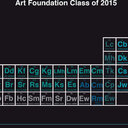Adult medulloblastoma: multiagent chemotherapy.
キーワード
概要
In this study, the records of 17 adult patients with medulloblastoma treated with craniospinal radiation and 1 of 2 multiagent chemotherapy protocols were reviewed for progression-free survival, overall survival, and toxicity, and the patients were compared with each other and with similarly treated children and adults. Records of patients treated at 3 institutions were reviewed. Seventeen medulloblastoma patients (11 female, 6 male) with a median age of 23 years (range, 18-47 years) were treated with surgery, craniospinal radiation (CSRT) plus local boost, and 1 of 2 adjuvant chemotherapy regimens. All tumors were infratentorial (10 in 4th ventricle and 7 in left or right hemisphere). Ten patients presented with hydrocephalus, and 7 of them were shunted. Eight patients had gross total resection, 7 had subtotal resection (>50% removed), and 2 had partial resection (<50% removed). Postoperatively, 3 patients had positive cytology and 3 had positive spinal MRI. Five patients were classified as good risk and 12 were classified as poor risk (Chang staging system). Ten patients were treated with the "Packer protocol," consisting of CSRT plus weekly vincristine followed by 8 cycles of cisplatin, lomustine, and vincristine. Seven patients were treated with the Pediatric Oncology Group (POG) protocol, consisting of alternating courses of cisplatin/etoposide and cyclophosphamide/vincristine, followed by CSRT. Eight of 17 patients relapsed, with all 8 relapsing at the primary site. Other relapse sites included the leptomeninges (5), bone (1), and brain (1). The estimated median relapse-free survival (Kaplan-Meier) for all patients was 48 months (95% confidence interval, >26 months to infinity). Median relapse-free survival for patients on the Packer protocol was 26 months, and for those on the POG regimen was 48 months (P = 0.410). Five of 10 on the Packer protocol were relapse-free, while 4 of 7 were relapse-free on the POG regimen. Two patients relapsed during chemotherapy and 6 relapsed after completing all therapy at 18, 18, 26, 30, 40, and 48 months. The estimated median survival of all patients was 56 months (95% confidence interval, 27 to infinity) with 11 patients alive; for the Packer protocol, median survival was 36 months, and for the POG protocol, it was 57 months (P = 0.058). The hazard ratio was 0 (95% confidence interval, 0 to infinity). Toxicity during the Packer protocol was moderately severe, with only 1 of 10 patients able to complete all therapy. Two patients had severe abdominal pain during CSRT + vincristine, and 5 had peripheral neuropathy during vincristine therapy. Hearing loss (>20 dB) occurred in 7, neutropenia (<500 microl) in 6, thrombocytopenia (<50,000 microl) in 6, nephrotoxicity (>25% decrease by creatinine clearance) in 2, and decreased pulmonary function (diffusing capacity for carbon monoxide decrease >40%) in 1. On the POG protocol, only 1 patient had persistent nausea and vomiting, 2 had peripheral neuropathy, and 3 had hearing deficit (>20 dB) or tinnitus. The POG and Packer protocols did not have a statistically significant difference in relapse-free or overall survival because of the small sample size. The POG protocol seemed to have less nonhematologic toxicity. Adults on the Packer protocol appeared to have shorter median survival and greater toxicity than did children. To know whether adding adjuvant chemotherapy to craniospinal radiation in adult therapy increases relapse-free and overall survival, we must await the results of a larger randomized controlled clinical trial.


